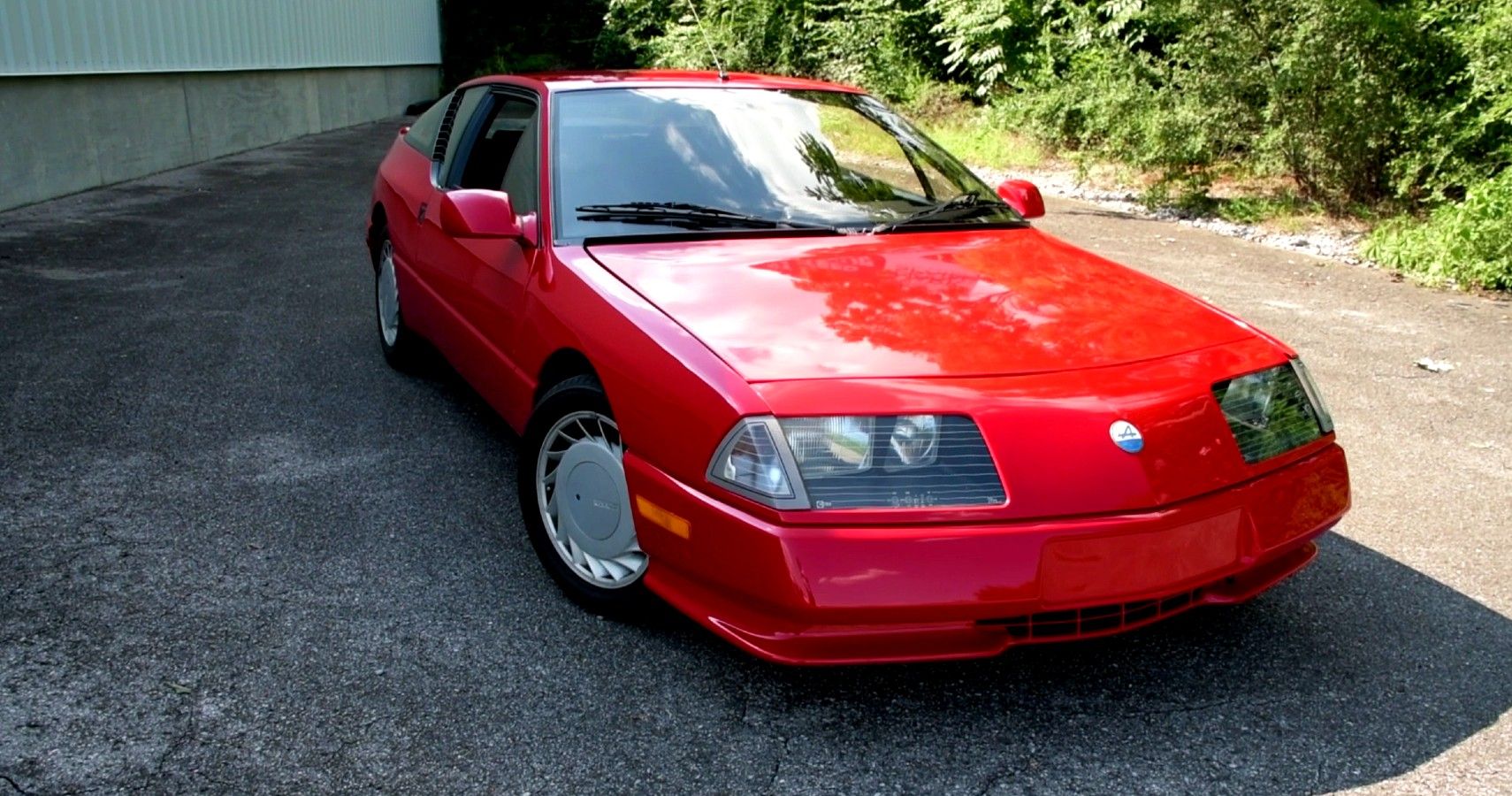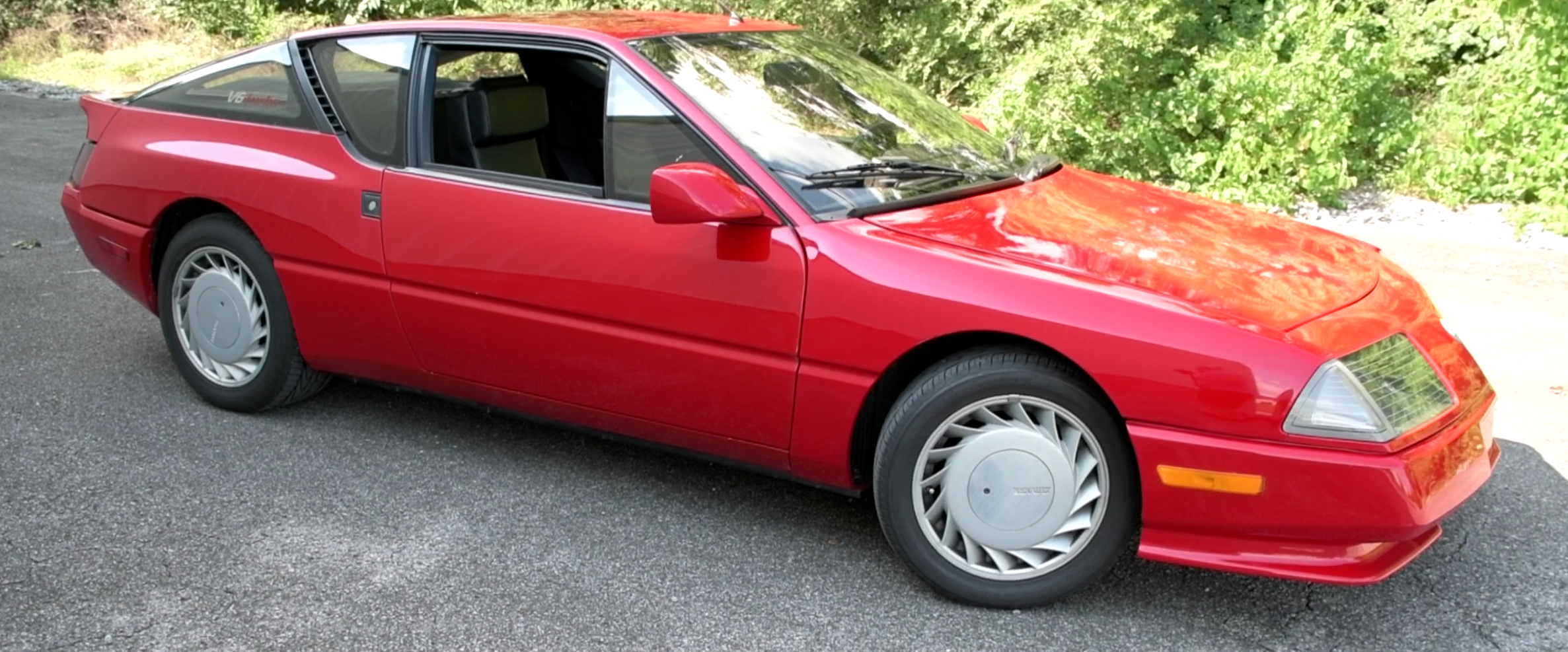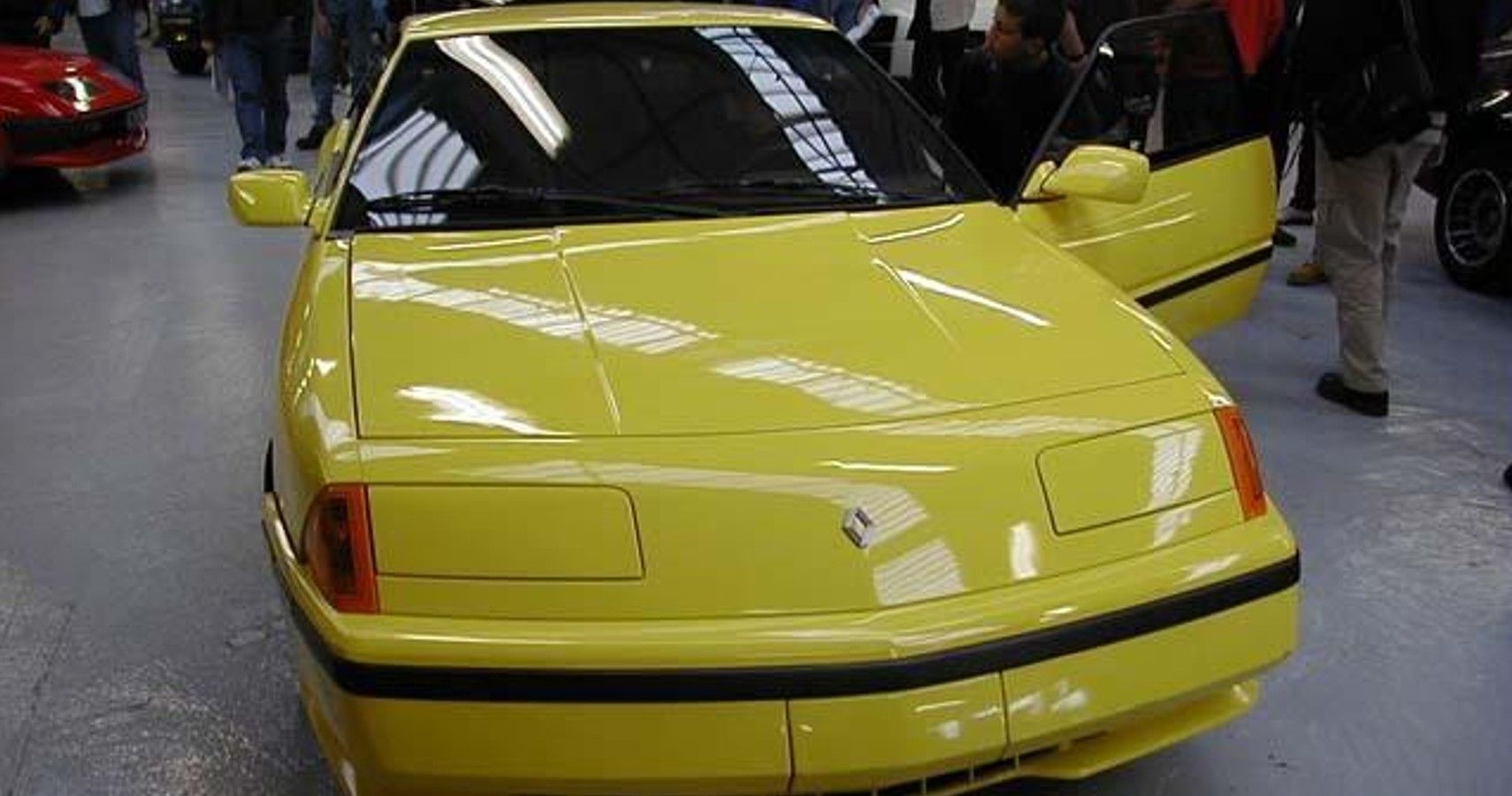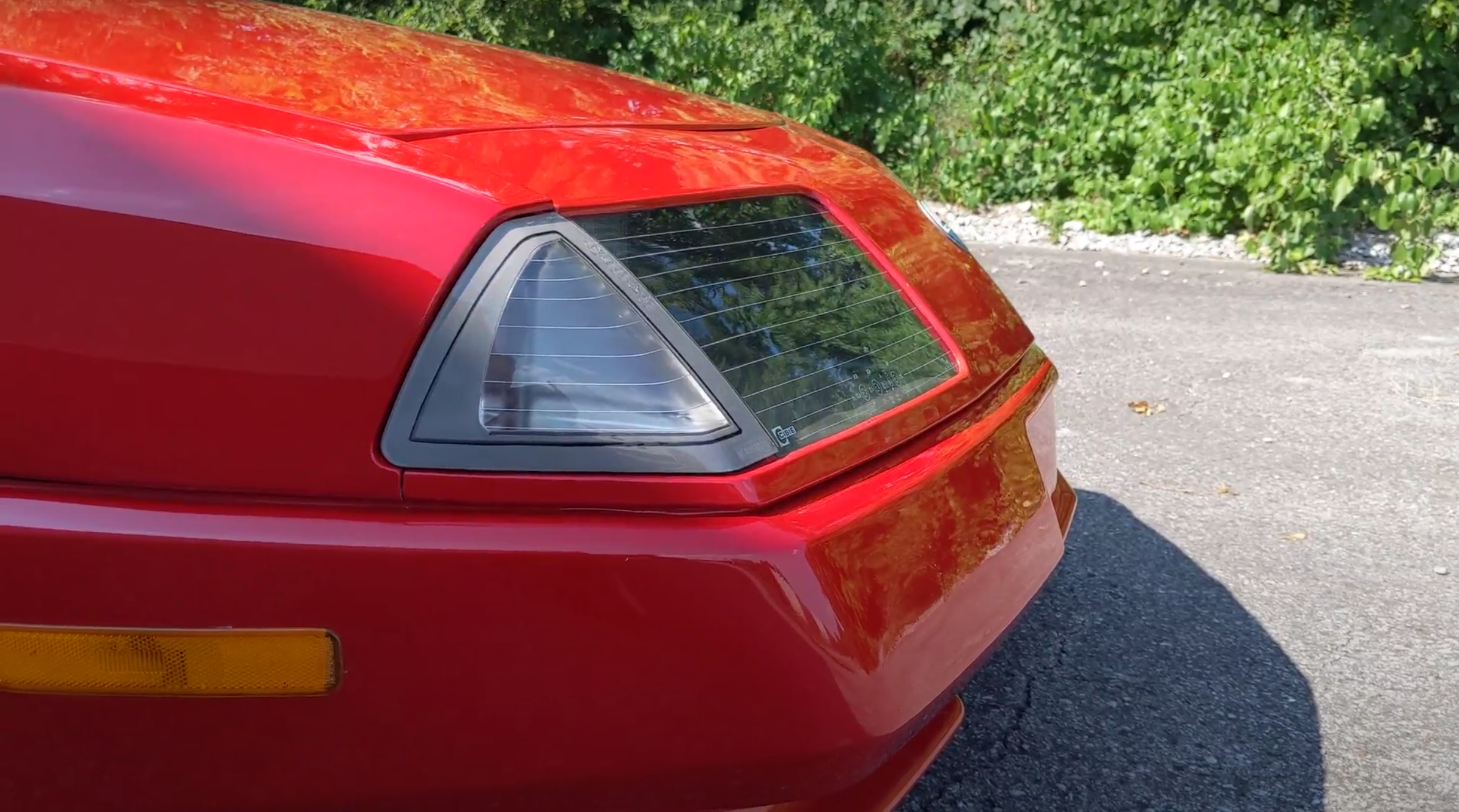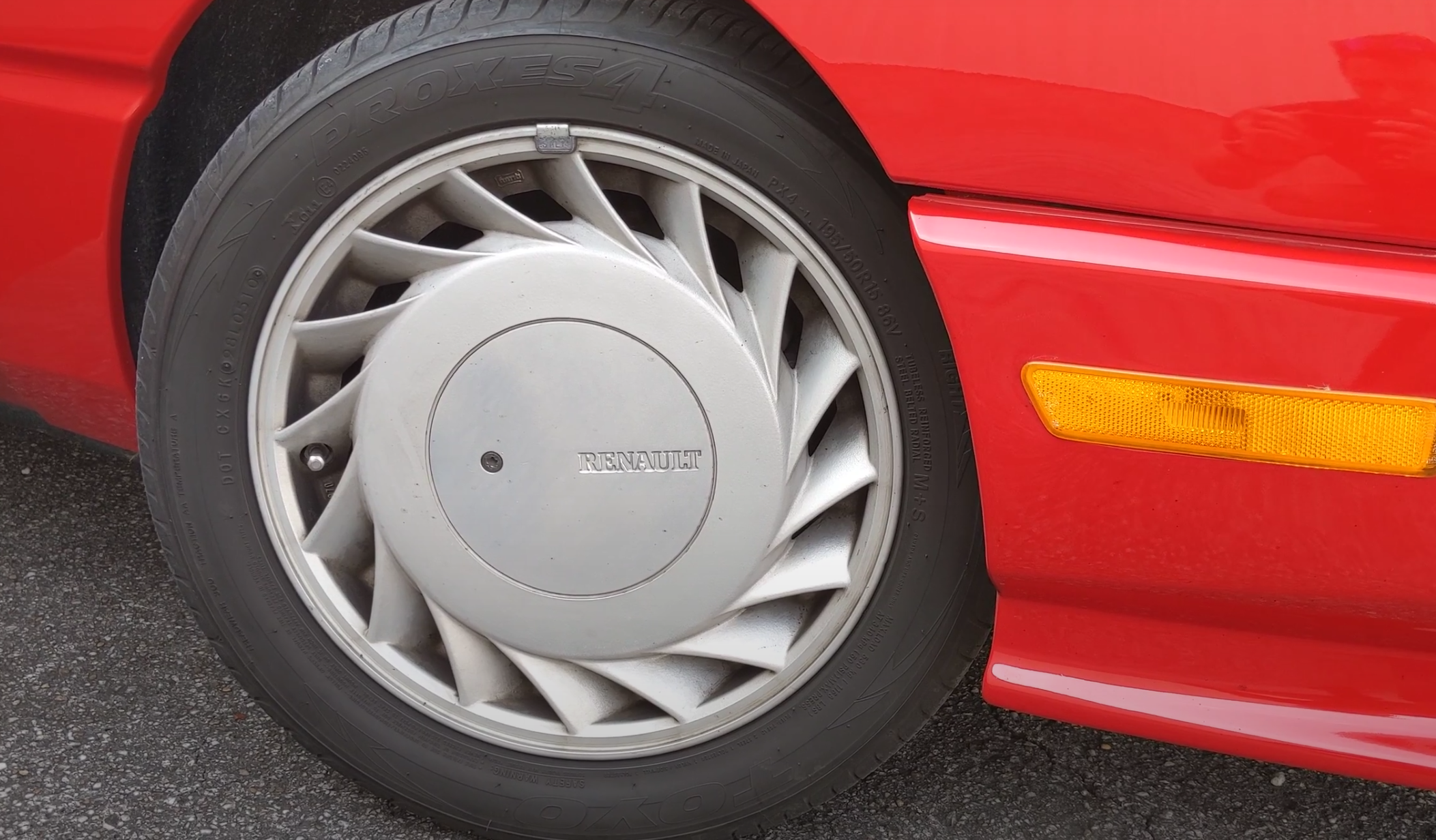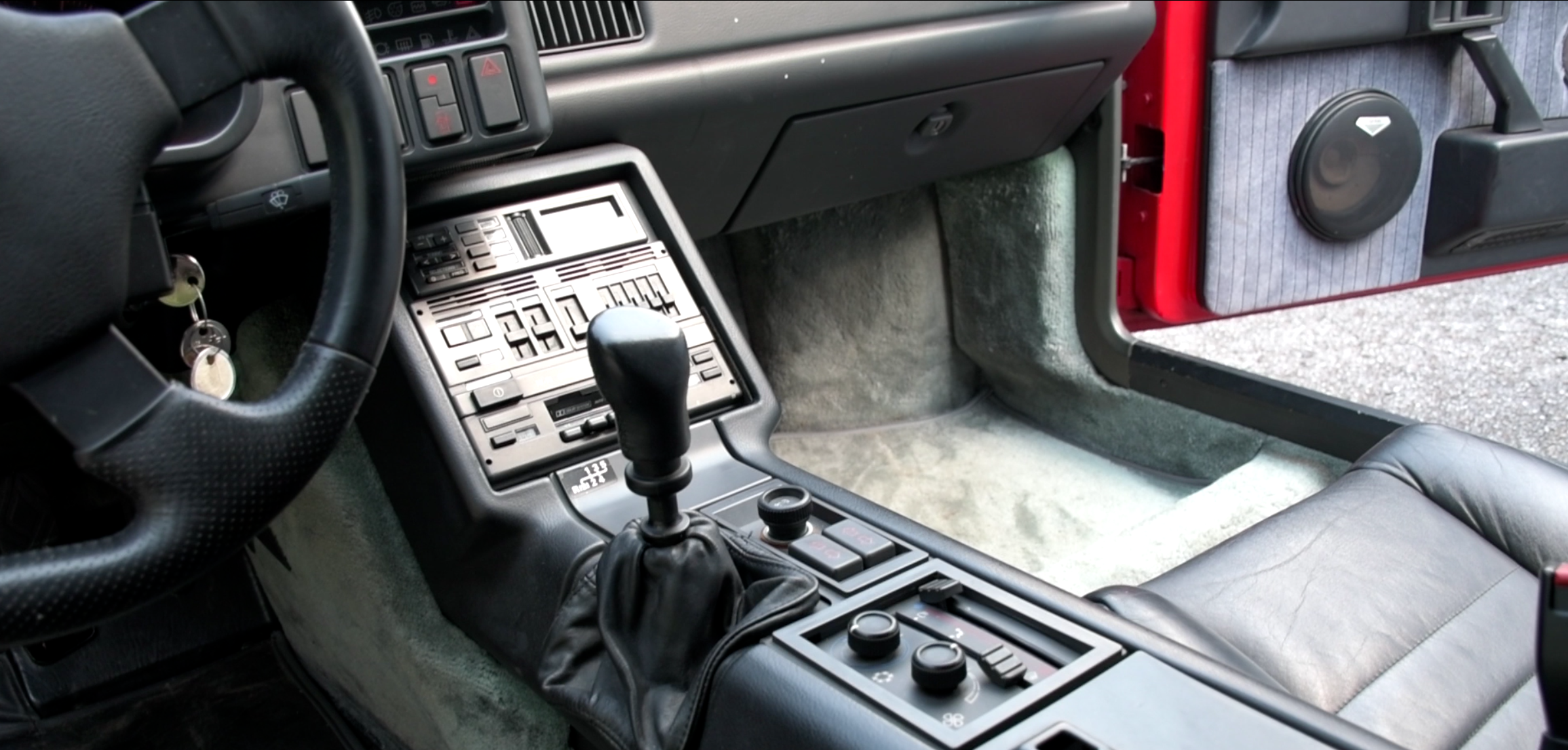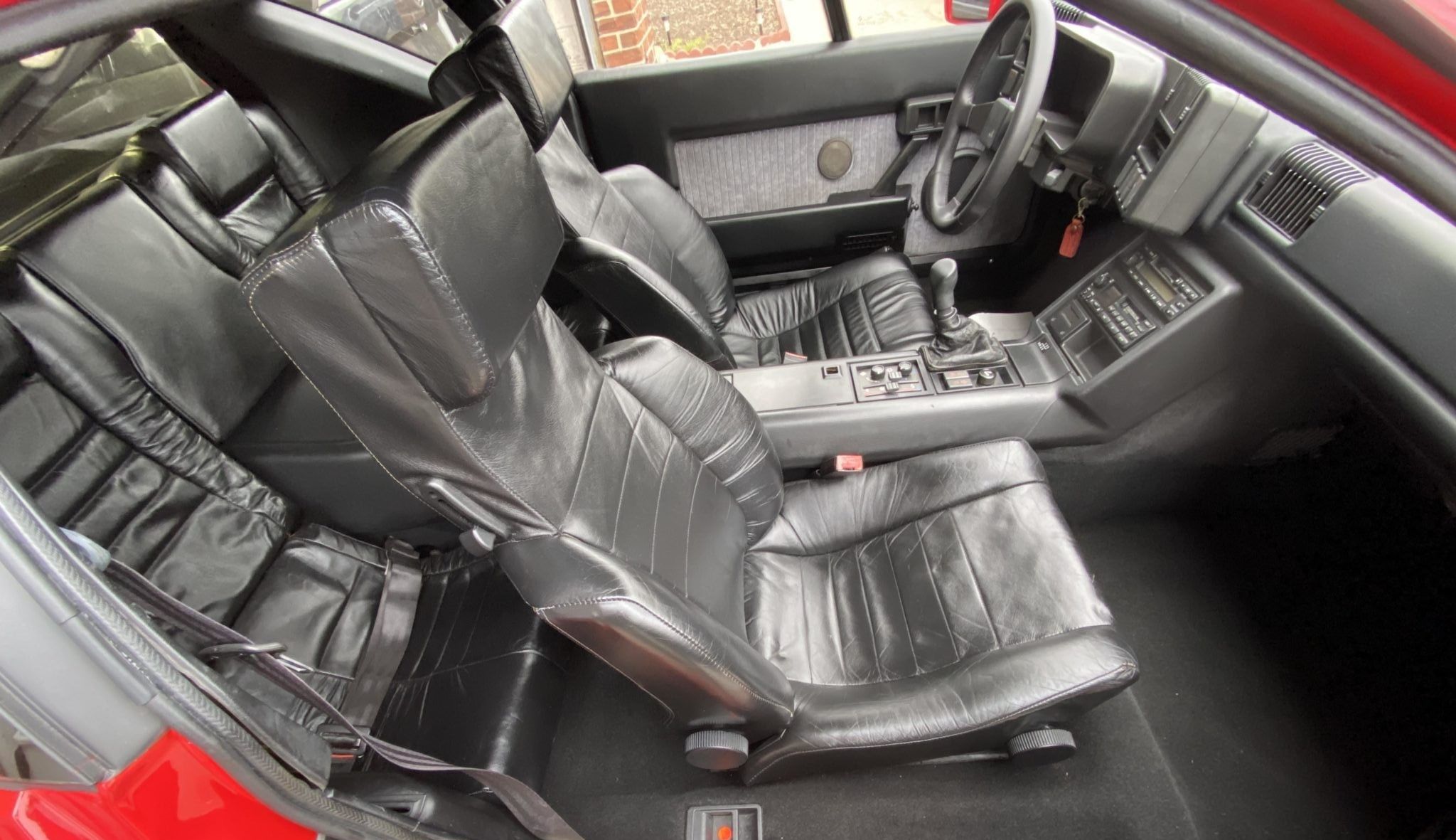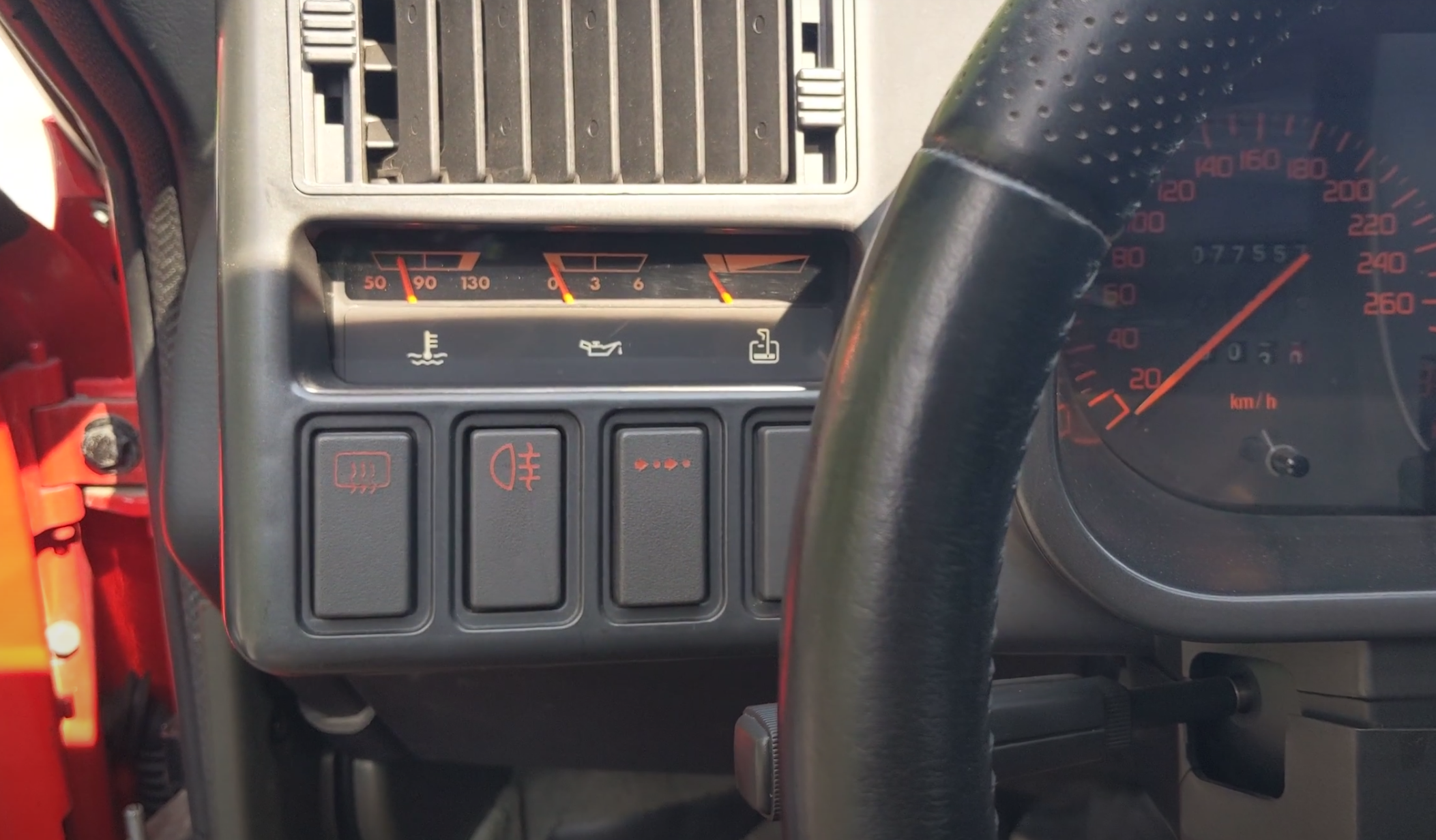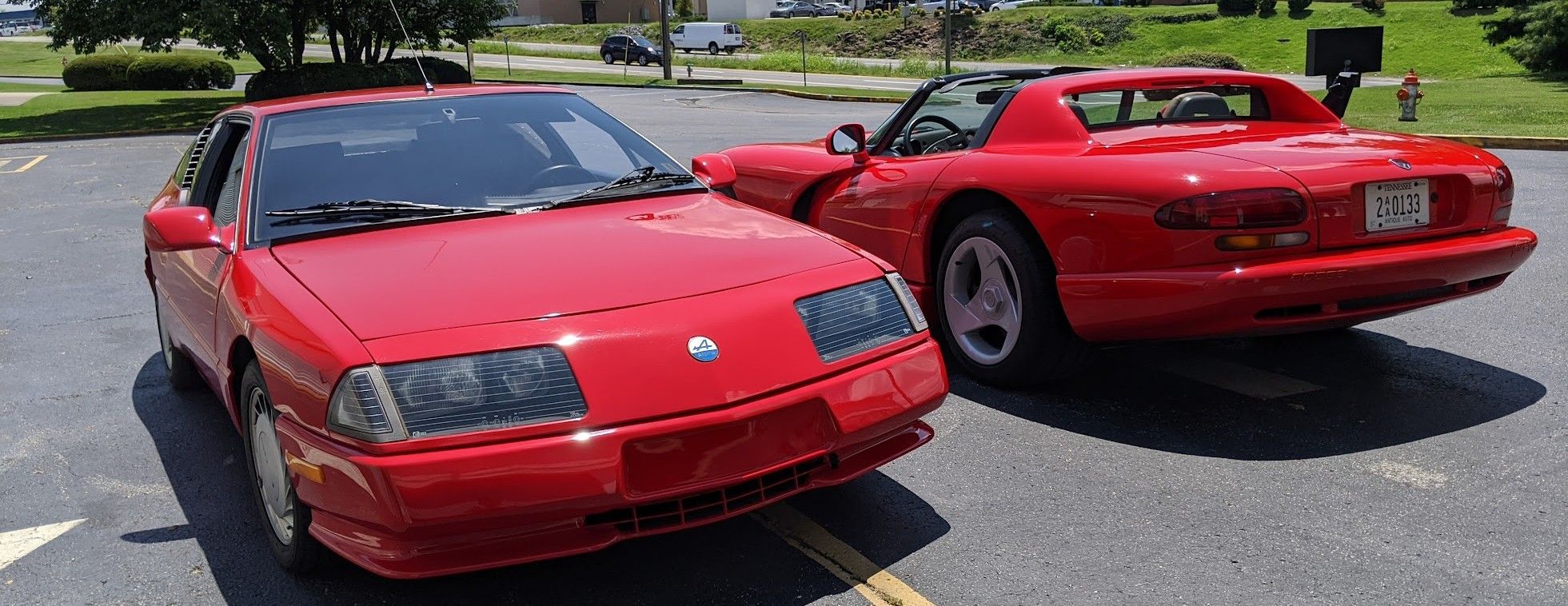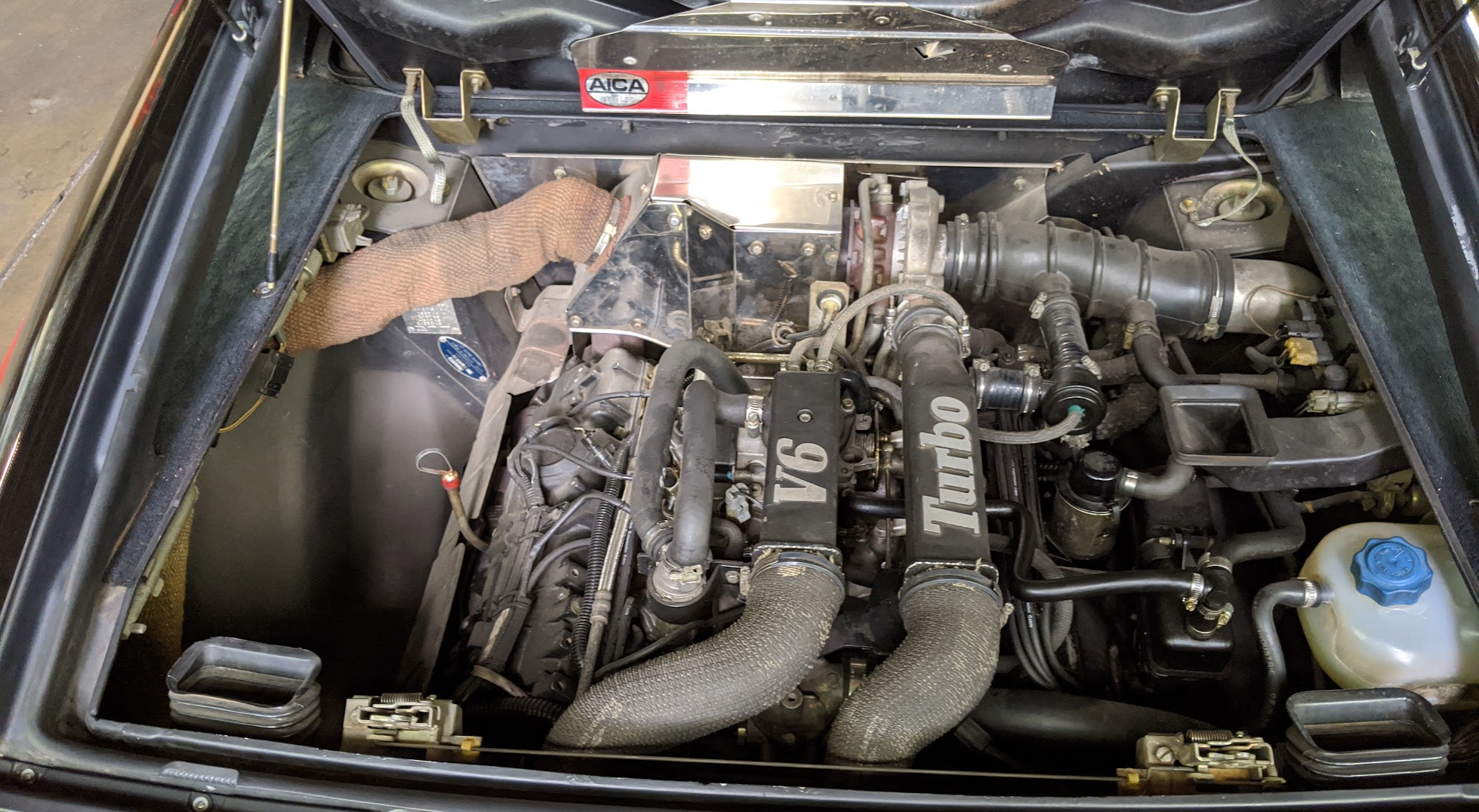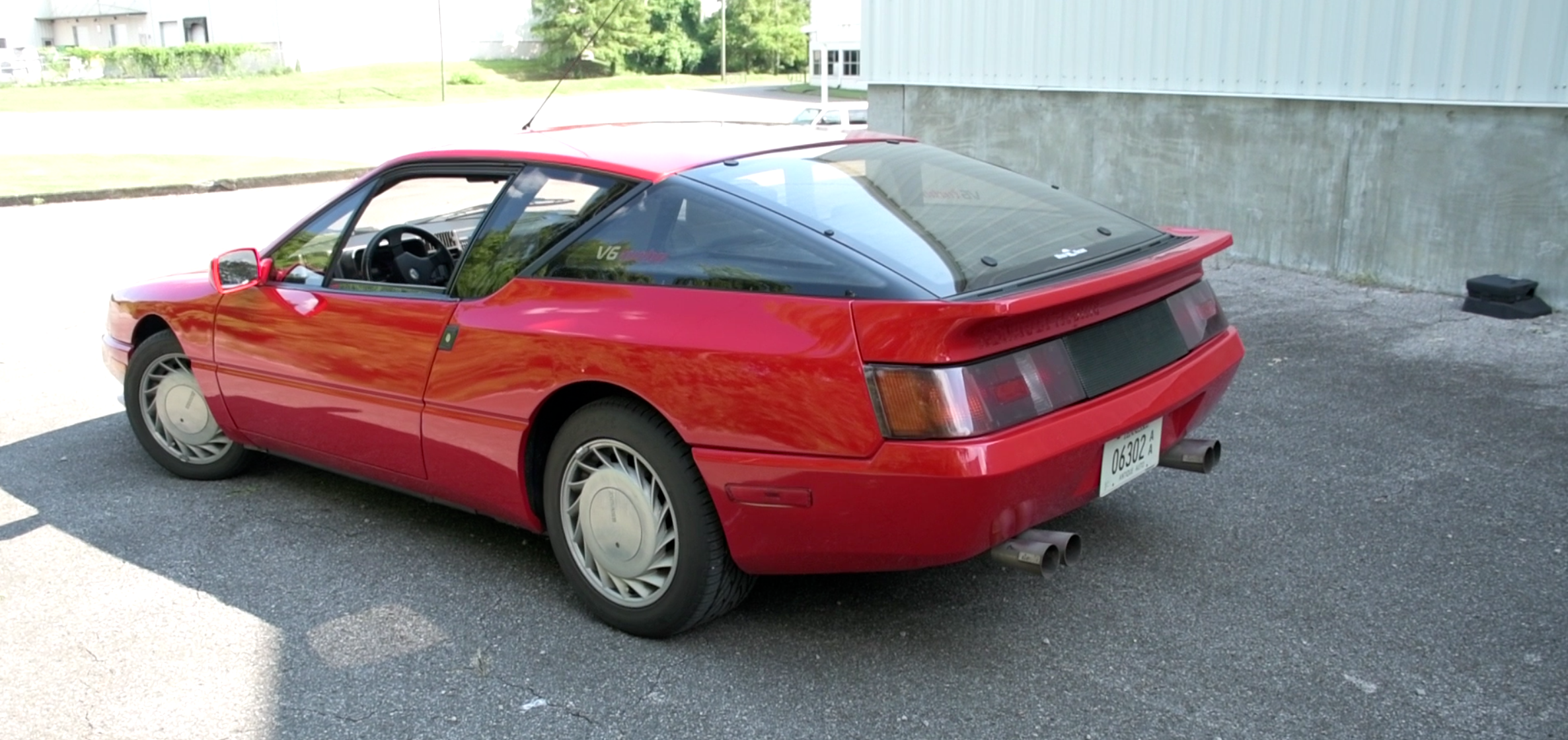In 1985, Renault built the Alpine GTA Turbo and went as far as to do all the engineering needed to make it legal here in the USA. Not a single one of them ever made it to our shores and that's pitiful because it's a proper laugh of a car. It's fun in every possible facet of design. Of course, being a French sports car, it's also full of interesting engineering that balks at convention.
Recently, Lane Motor Museum gave me the chance to experience this wild and wonderous car and now, after some reflection, it seems like it might be the ultimate French sports car. How's that possible considering the French have built things like the Bugatti Veyron? The Alpine GTA Turbo combines French quirkiness with speed, handling, and luxury in a way that no other car does.
Here's Why The Alpine GTA Turbo Wasn't Sold In America
Despite going to all the trouble of meeting US regulations for sports cars, the GTA Turbo didn't arrive here because of Chrysler. Originally, sales were slated to begin in mid-1987 but in March of that year, Renault sold its stake in AMC to Chrysler.
Here's a photo of one of the rare USDM cars that was completed but was never shipped. Notice the pop-up headlights and the unique bumpers.
Since Renault didn't have any dealerships in the USA it had always planned to sell the GTA Turbo at AMC dealers. However, this created a problem for Chrysler because they feared (and rightly so, most likely) that the more sporty and capable GTA Turbo would cannibalize sales of the upcoming Chrysler TC by Maserati. Had the Alpine begun production just a year or two earlier, there's a chance that Chrysler might have just used it as opposed to attempting (and failing) to produce a successful exotic sports car of their own.
Had that happened, the Alpine GTA might have ended up much more successful than it was. That lack of success had nothing to do with the car being good to drive on its own. With a rear-mounted turbocharged V6, it produces just shy of 200 hp and feeds it to the rear wheels via a five-speed manual transmission. If that sounds a lot like a Porsche that's because it is.
In fact, aside from its unique backbone chassis design, the Alpine is very similar to Porsche products of its day. Renault tried to overcome Porsche by offering what it felt like was more practicality. Of course, it did so with a particularly eccentric design ethos.
A Futuristic Homage On The Outside
For Renault and Alpine fans, there's no mistaking the clear references to the past on the outside of the GTA Turbo. The car it replaced, the A310, used a one-piece fiberglass shell as its body. Styling was very similar but the GTA Turbo provides a bit more visibility and the move to separate body panels actually helped to cut production time nearly in half.
The world-famous A110 influenced the GTA, serving as the muse for its sloping roofline and squared-off taillights. It's not all just about style, though. Notable touches cover the car and aid in its pursuit of speed. The largest of which is easily the most overlooked. Using fiberglass body panels allowed this car to be very light. At just over 2,500 pounds, it's hundreds of pounds lighter than its rivals of the time.
The Turbine-styled wheels seen on this model cool the brakes while at the same time reducing turbulence around the wheel itself. Notably, the naturally aspirated GTA also had a unique set of wheels available that completely closed off the face of the wheel itself.
The hood sits on a clamshell hinge and provides access to the fuel door, windshield wiper fluid, and provides modest storage space. Why stow something like the fuel door under the hood? Renault wanted to give this car every advantage it could and that meant making it slippery. With a drag coefficient of just .28, the non-turbocharged version of the GTA actually proved to be the most aerodynamic production car ever made when it first arrived on the scene.
The more powerful turbocharged model (like the one reviewed here) requires larger air intakes and scoops and, therefore, its drag coefficient drops to .30. Outside, the GTA Turbo is slick, light, and manages to pay homage to the past while moving the brand forward. Inside though, it's all '80s.
The Only Thing Missing Inside Is A Disco Ball
Open the door of the GTA and it immediately feels like we've gone back in time. The seats stand out as something only a concept car would have and then the dash confirms the era in which the GTA was born. It's almost entirely plastic and features more switchgear than the F-14 Tomcat fighter jets in Top Gun.
In the above photo, there are some 35 different buttons, switches, or sliders and we haven't even talked about the four additional switches on the other side of the wheel. What's seen above includes the climate control center, which is positioned just below the gear selector—an odd placement to be sure. Why move it away from its more conventional placement in the center control stack? Well, that's where Renault decided to place a full-fledged equalizer for the sound system. Yes, all of those sliders seen above are there so that passengers could perfectly tune the sound. It's as though Renault felt everyone in 1986 was a moonlighting DJ.
The aforementioned seats provide numerous adjustments. The seat pad itself can be raised and lowered as a whole or in the front or back independantly. That's a big benefit for taller folks as, without that adjustability, it simply wouldn't be possible to fit inside for anyone over six foot two or so.
The pedal box is fairly tight and the gear lever gets involved as well. It seems to flow from the center console into the driver/s foot well. From the driver's seat, the gauge cluster features two prominent orange dials communicating speed and engine rpm with a small boost gauge fitted between them. On the left of the gauge is another prominent plastic dash piece. It feature four more buttons and indications of oil pressure, oil level, and coolant temperature.
The rear seats of the GTA Turbo are a bit laughable. Yes, technically a human being can fit back there but most people above the age of six or seven will have a hard time maintaining any sort of comfort.
Renault did outfit the rear seats with speakers, though, and quite large ones at that. Positioned right next to where a passengers thighs would be, it must have made for an interesting experience for rear seat occupants. Of course, those seats were most likely used for storage far more often.
More storage is available thanks to a parcel shelf under the rear hatch. There are two more small storage cubbies in the space between the seats. That speaks to the overarching goal of this car. Yes, it was meant to be fast, but it was also meant to be practical and futuristic. While it feels hilariously outdated by today's standards, it's easy to appreciate just how innovative the GTA was for its day.
An Engaging Drive In The Alpine GTA Turbo
For all the talk about this car's styling, interior, and failed attempt at full-bore success, many miss how good of a driver it really is. For a simple and easy to understand comparison, let's look at the brand new 2022 Subaru BRZ. It builds 228 hp, about 28 more than the GTA Turbo. Of course, being a turbocharged car, the GTA makes a good bit of torque. In fact, it makes 18% more torque, 218 foot-pounds to the BRZ's 184. Now, consider that the GTA Turbo is some 300 pounds lighter than the new BRZ, and that's a recipe for fun.
While not the most melodious engine ever built, the V6 mill behind the occupants is actually pretty famous. It's the same Peugeot-Renault-Volvo unit found in the DMC DeLorean. Of course, in this application, some adjustments, like the addition of turbocharging have been made.
Power comes on fairly early, around the 2,200-rpm mark and builds steadily until around 4,500 rpm where full boost is in effect. When the redline is reached at just over 6,000 rpm depressing the clutch and swapping up into the next gear is a breeze.
The pedal itself is light and easy to modulate. The shifter, while awkwardly positioned too close to the driver for my personal comfort, is notchy and easy to place. Of course, it shouldn't go unsaid that the close quarters of the steering wheel and shifter were an intentional choice to keep a driver's hands close to the wheel at all times. That shifter is attached to another famous component, the transmission, which is the same unit found in the Lotus Esprit of the time.
Every corner of the GTA features a double-wishbone suspension and disc brakes. Combined with the potent powertrain, the car is a great cruiser. GTA actually stands for "Grand Tourisme Alpine," a fitting moniker.
Steering is lighter than one might expect from an unassisted box. The car is easy to place and the very unique backbone chassis never seems out of place even when harder corners get thrown at it. Punch it around a corner and the nose lifts slightly, the front tires get a little light, and you're reminded that the motor is technically behind the rear axle.
Still, this isn't a fickle car. It's not trying to kill you when you overcook a corner. It communicates well and provides a truly satisfying experience from a purely driving perspective. The power to weight ratio is a great place to start but the way Renault engineered the suspension, steering, and chassis really speak to their appreciation for speed.
Renault Going For Broke
The Renault Alpine GTA Turbo is fun, fast, and luxurious but it doesn't stop there. It's dripping with futuristic French style inside. Outside, it's historically shaped and yet forward thinking. It's the result of a French automaker that absolutely went for it. And even though it never became the success that Renault hoped for, it stands out. Not only is it far more interesting than most of its contemporaries, at the end of the day, it's a piece of outstanding engineering and design that drives great.
Special Thanks: Lane Motor Museum, @GingerlyCaptured

